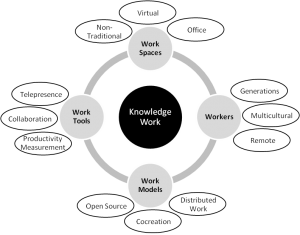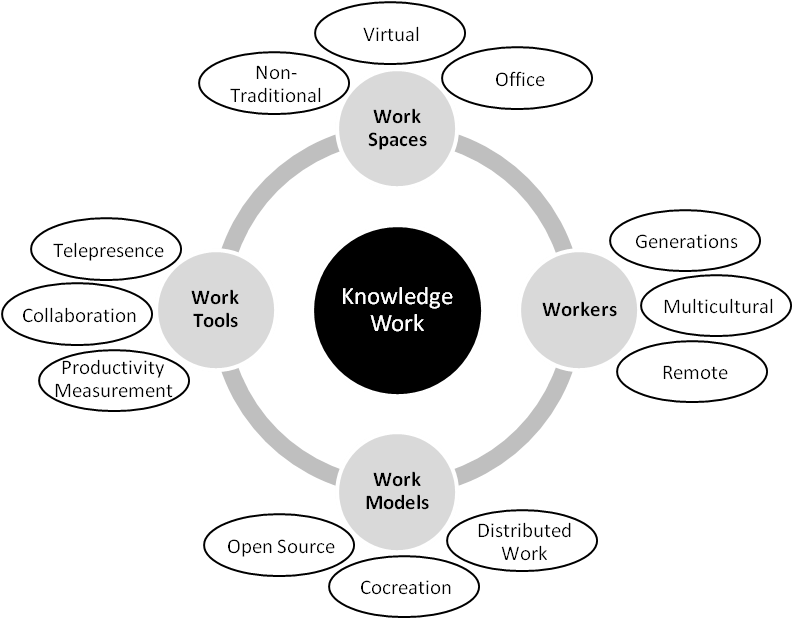This is the first in a series of posts about the future of the knowledge work. They are based on an article I did with Chris Carbone that was published in the Spring 2013 issue of Employment Relations Today. The article was inspired by a client meeting on the subject a few years back in which we introduced a revised scenario process, and used knowledge work as our topic. The topic proved so interesting that we followed up on it and produced a piece for ERT. I’ll note any process tweaks we used, since that may be of interest to readers of this blog.
Defining knowledge work
 Davenport suggests that “Knowledge workers have high degrees of expertise, education or experience, and the primary purpose of their jobs involves the creation, distribution or application of knowledge.”[i] One of the “tweaks” in our process was the formal introduction of domain maps to visually describe the topic. As you can imagine, knowledge work is pretty broad, so we used the domain map to show how we were thinking about it. The idea of using the domain map is to show it to the client and say something like, “when we say knowledge work, here’s what we mean.” It also provides a means to guide the research and scanning, which we’ll get into later.
Davenport suggests that “Knowledge workers have high degrees of expertise, education or experience, and the primary purpose of their jobs involves the creation, distribution or application of knowledge.”[i] One of the “tweaks” in our process was the formal introduction of domain maps to visually describe the topic. As you can imagine, knowledge work is pretty broad, so we used the domain map to show how we were thinking about it. The idea of using the domain map is to show it to the client and say something like, “when we say knowledge work, here’s what we mean.” It also provides a means to guide the research and scanning, which we’ll get into later.
In framing the topic for our study, we considered how four areas of knowledge work are changing: workers, work spaces, work tools, work models. These broad areas were further broken down into subcategories, as shown in the graphic. I’ve become an advocate of doing a domain map with every foresight project — it helps build common understanding within the team and with clients, and also provides a launching point for research and scanning. Andy Hines
[i] Davenport, T. (2005). Thinking for a living: How to get better performance and results from knowledge workers. Boston, Mass: Harvard Business School Press, p. 10

[…] This is the second in a series of posts about the future of the knowledge work. They are based on an article I did with Chris Carbone that was published in the Spring 2013 issue of Employment Relations Today. Last time, we talked about how we scoped knowledge work using a domain map. […]